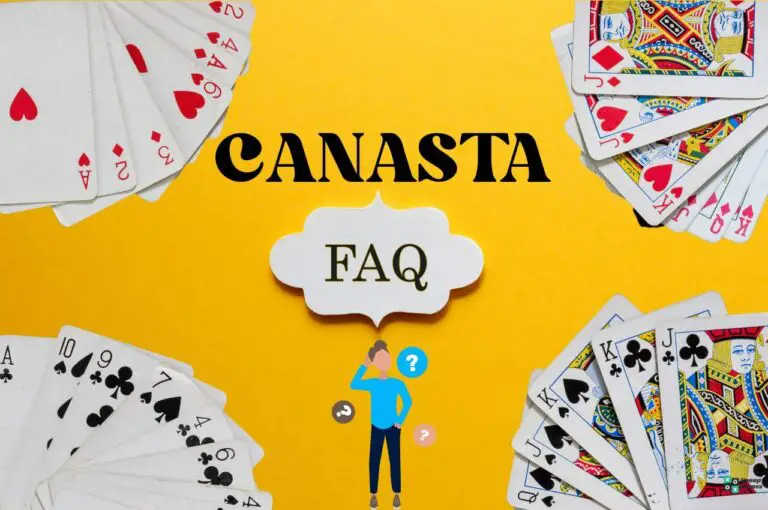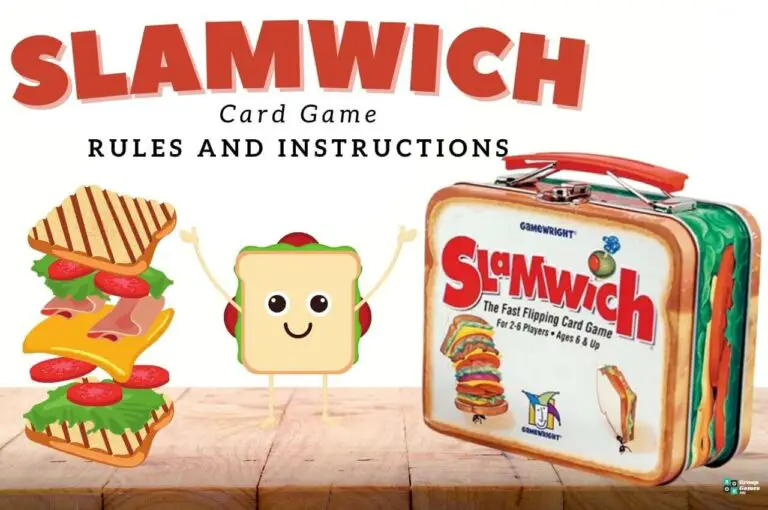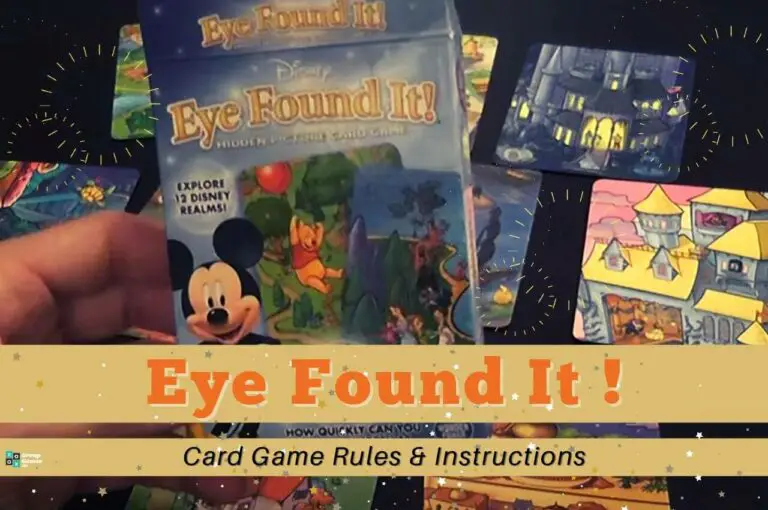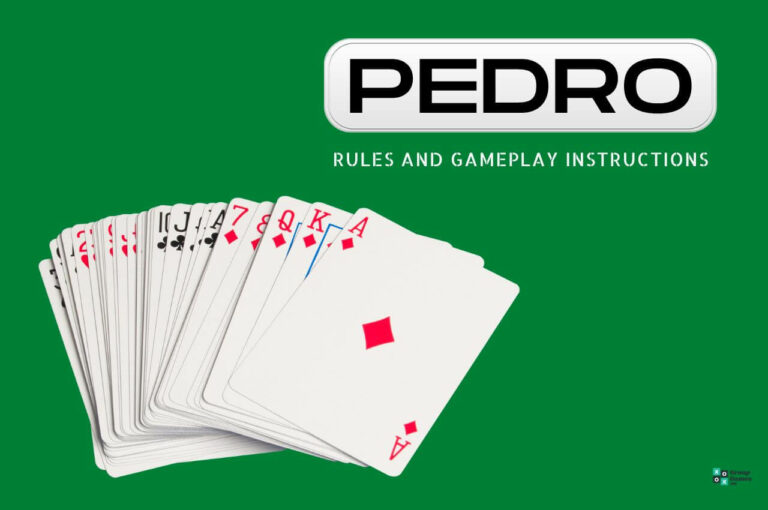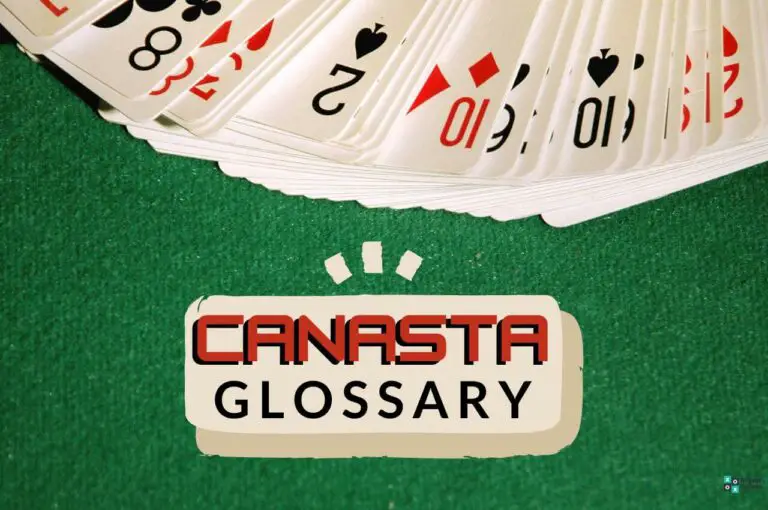Learning the Tonk rules is very simple, and it’s certainly worth the effort since this card game is truly enjoyable. This Tonk rules guide explains the game step by step.
Tonk (or Tunk) is a Rummy-type game that was incredibly popular in South America in the 1930s. It’s often likened to the Gin Rummy game or the famous game of Canasta.
Nevertheless, it’s more straightforward than those two games, which attracts less experienced players. The goal is to be the last standing, achieved by matching cards and forming melds.
This Tonk rules guide will cover the following:
- What is Tonk?
- Tonk Rules
- Tonk Scoring
- Tonk Rules in Pictures
- How to Play Tonk (Video tutorial)
Read on and learn how to play Tonk turn by turn, including forming melds and avoiding penalty points.
What Is Tonk?
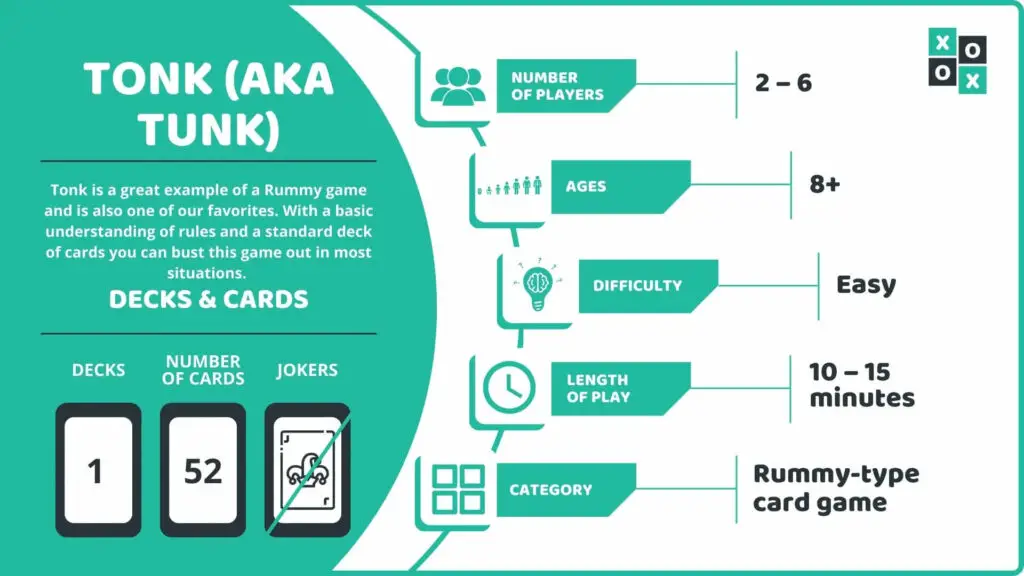
Tonk is a fast-paced card game that can be easily learned by anyone, including kids and total beginners. Players are forming melds and aiming for the lowest score to avoid elimination.
Number of Players: 2 – 6
Ages: 8+
Difficulty: Easy.
Length of Play: 10 – 15 minutes per round
Category: Rummy-type card game
Similar to: Canasta, Gin Rummy, Hand Knee and Foot
Main Objective: Be the last player who avoids scoring 100 points across multiple rounds.
Our Take: Tonk is a great example of a Rummy game with straightforward rules that won’t discourage beginners or kids.
What You’ll Need to Play Tonk
To play Tonk, you’ll need the following:
- Decks: 1
- Number of Cards: 52
- Cards Omitted: Jokers
Tonk Rules
Rummy games always center around forming melds (or spreads), and Tonk is no exception.
However, while some Rummy games have rather complex and tricky melding rules, Tonk leaves minimal space for confusion. Let’s start with the initial card setup.
Set the Game Up
First, select a player at random to be the dealer – or deal yourself as the host of the game. The dealer shuffles the deck well and deals out 5 cards to each player.
Note: Tonk is sometimes played with 7 cards for each player.
The remaining cards are placed in the center as the draw pile. Flip the top card on the draw pile and put it face up on the side to form the discard pile.
How to Play Tonk
Whoever is sitting left of the dealer starts the game, with players taking turns in a clockwise direction.
The player must pick up a card from either the draw pile or the discard pile, then attempt to lay down a meld and end their turn by discarding any card from their hand.
Melds can be either Sets or Runs:
- Sets are 3 or more cards of the same rank (e.g., 3 Jacks).
- Runs are 3 or more cards of the same suit in a sequence (e.g., 7 Diamonds, 8 Diamonds, 9 Diamonds).
Note: For the purpose of runs, cards are ranked from the highest to lowest as follows: King, Queen, Jack, 10, 9, 8, 7, 6, 5, 4, 3, 2, Ace.
If a player can form a meld, then they lay the cards down face up in front of players.
Besides forming new melds, players can also “hit” the melds already on the table (either their own or their opponents’) by adding one or more fitting cards.
Example: Add the 4th 7 to a set of 7s, or add a 10 Diamond to a run of 7-8-9 Diamond.
Each player aims to get rid of all their cards as soon as possible. The 1st player to achieve this wins the round.
The game goes around the circle 1 last time, with the remaining players attempting to form a meld with one last draw.
Scoring
Once everyone had 1 last turn, scores for the round are calculated based on the cards players have left in their hands.
- Each face card (King, Queen, or Jack): 10 points
- Numbered cards: face value (e.g., 9 is worth 9 points, etc.)
- Aces: 1 point each
Continue playing new rounds until the players, one by one, collect the scores of 100 points, which means they get eliminated from the game.
The one last person becomes the winner of Tonk.
Tonk Rules in Pictures
Step 1
Each player gets 5 cards. The remaining deck is your draw pile. Flip its topmost card and place it face up on the side as your discard pile.
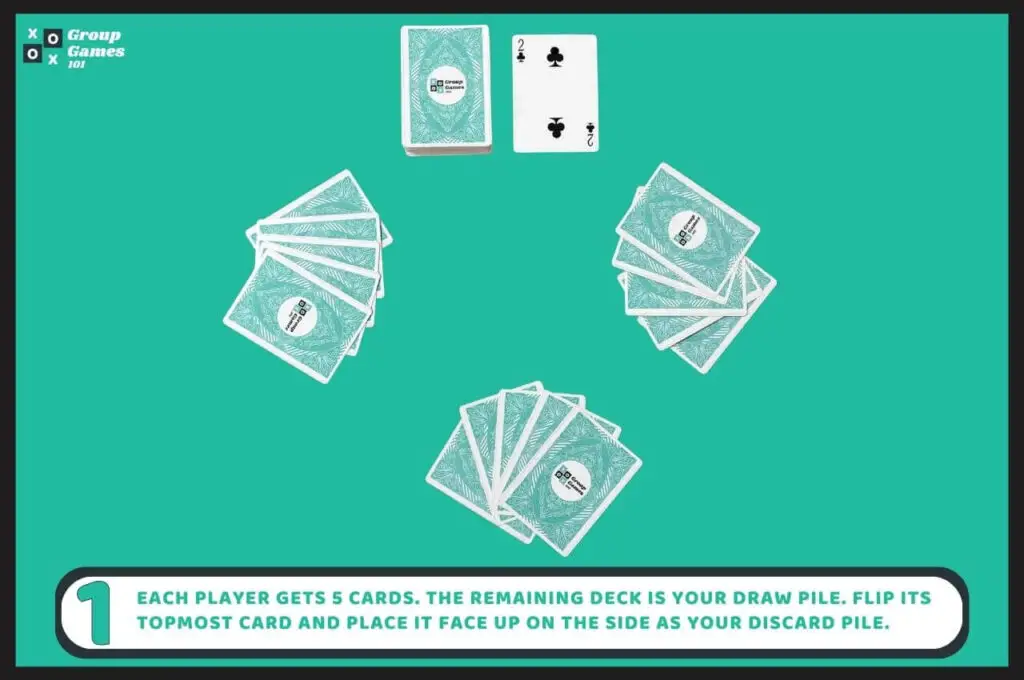
Step 2
The players take turns in a clockwise direction. When on a turn, a player must pick up one card from either the draw pile or the discard pile.
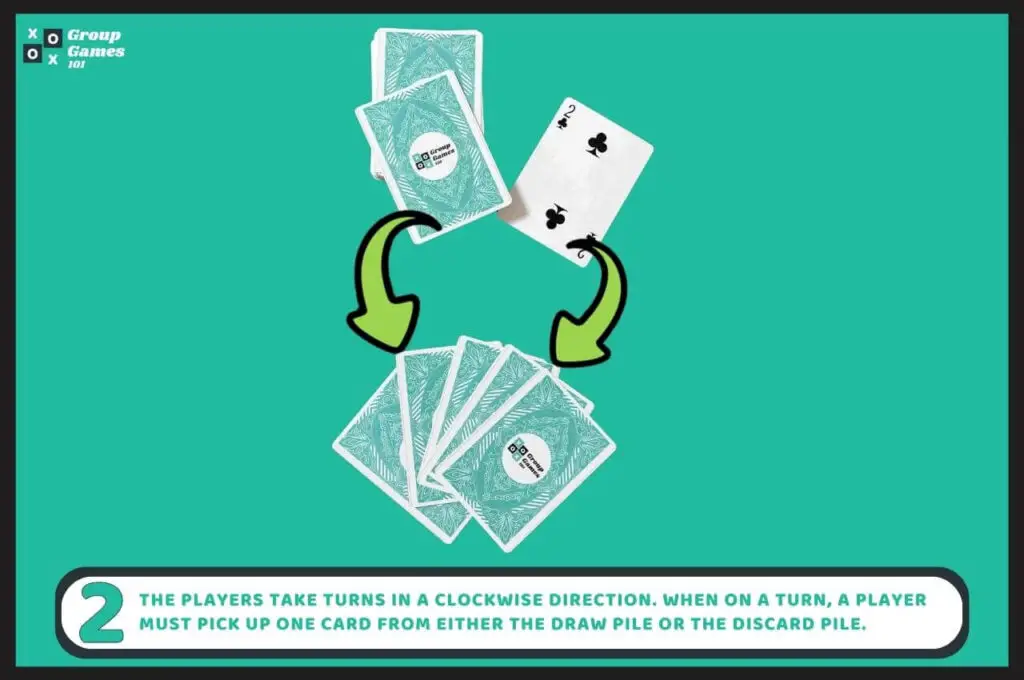
Step 3
A player then dumps a meld. This can be a set of 3+ cards of the same rank or a run of 3+ cards of the same suit in numerical order. It’s allowed to add cards to the existing melds, too.
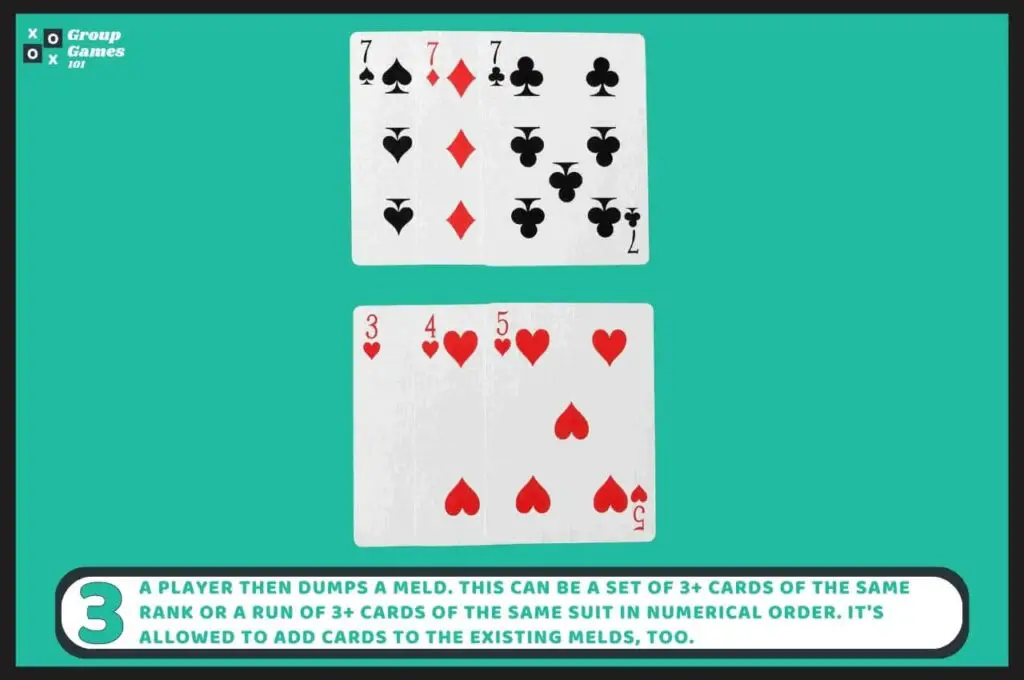
Step 4
Each turn ends by discarding one card from a player’s hand on the discard pile.
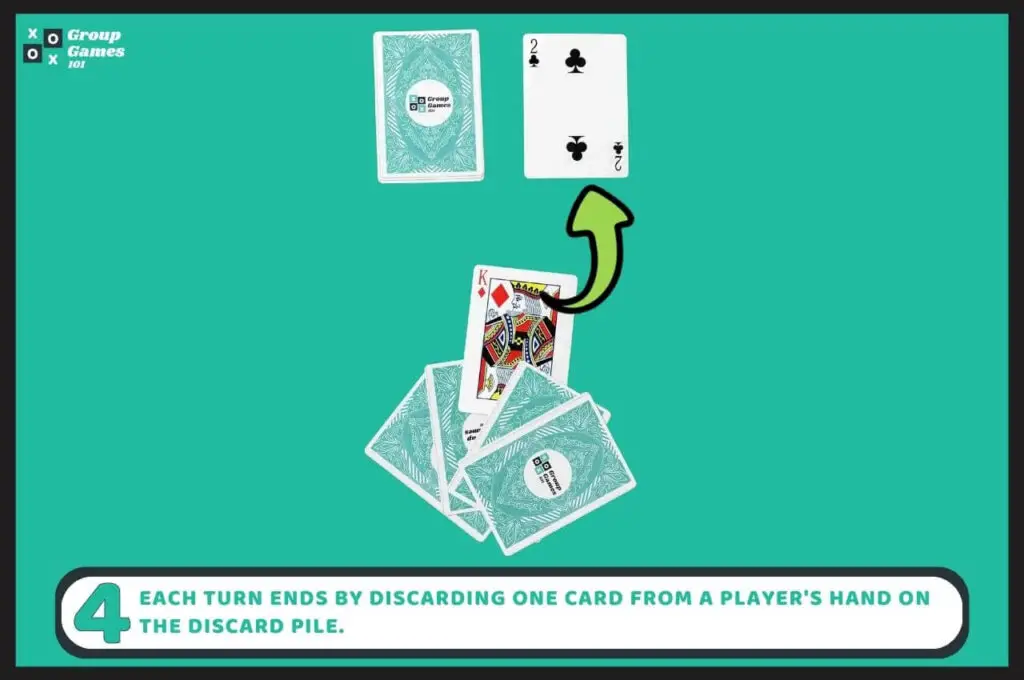
Step 5
The round ends when someone discards all their cards. The remaining players earn points based on the cards left in their hands. The last one to avoid earning 100 points wins the game.
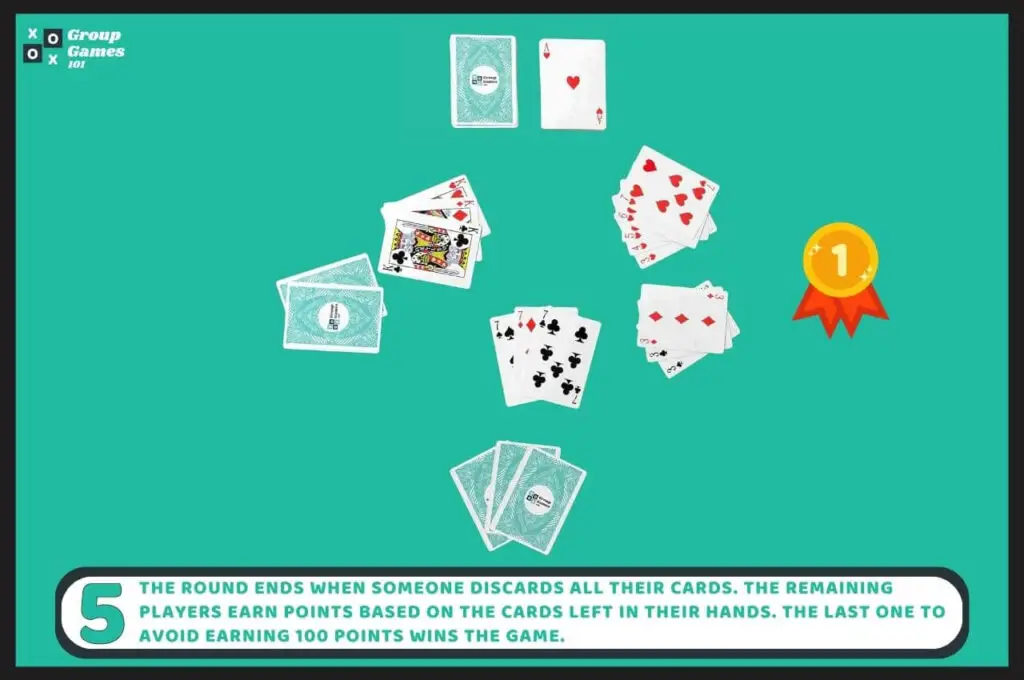
How to Play Tonk – Video Tutorial
Frequently Asked Questions
Are there any other specific Tonk rules to be aware of?
There is one optional rule that adds a bit more drama to the game. If a player gets exactly 50 points after the first round and shouts out ‘Tonk,’ they automatically win the game.
Can you hold aces according to the Tonk rules?
Some versions state you cannot hold onto cards, including the aces, but allow players to hold onto aces (i.e., not playing them even if they form a meld).
We recommend not holding them if you’re playing with beginners, but if you’re playing with more experienced players who agree to this rule, go for it.
What does it mean to ‘drop’ in Tonk?
You can end the play at the start of your turn by putting all your cards face up on the table (dropping or knocking). This means you claim to have the lowest point count total in your hand.
You win the game if you’re right (you really have the lowest score). You lose the game if someone has a lower or equal point total.
Other Similar Games to Tonk
If you’re searching more games similar to Tonk, take a look at some of our guides below:


